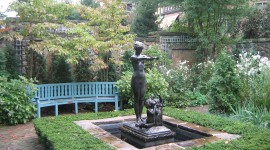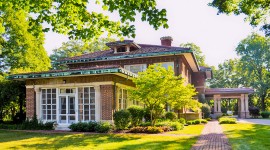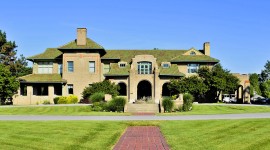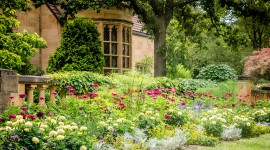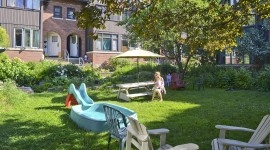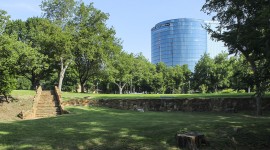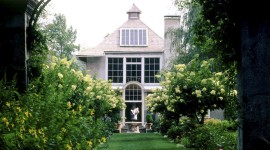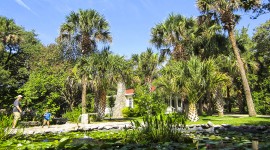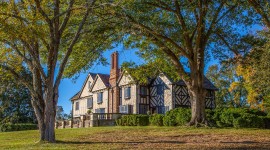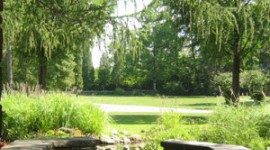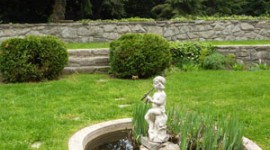Arts & Crafts
This style of landscape design evolved in England in the late nineteenth century as a reaction against industrial mass production. In America, it found regional expression in both architecture and landscape architecture, with a strong emphasis on detail and high-quality hand-craftsmanship. Designers sought honesty of form and materials in an effort to achieve a consistent, unified, and harmonious whole that evoked the spirit of the place. Plantings often included informal meadows and lawns with “old-fashioned” trees, shrubs and curvilinear perennial borders (often with an emphasis on native plants), while garden furnishings and details (such as gates, walls and fences and benches) might include unique combinations of hand-forged wrought iron, well-designed rustic carpentry, ceramic tiles, and clinker brick. In Great Britain, this garden style is identified with the work and writings of Gertrude Jekyll and William Robinson, and known colloquially here as either Cottage Gardens or Grandmothers’ Gardens.



